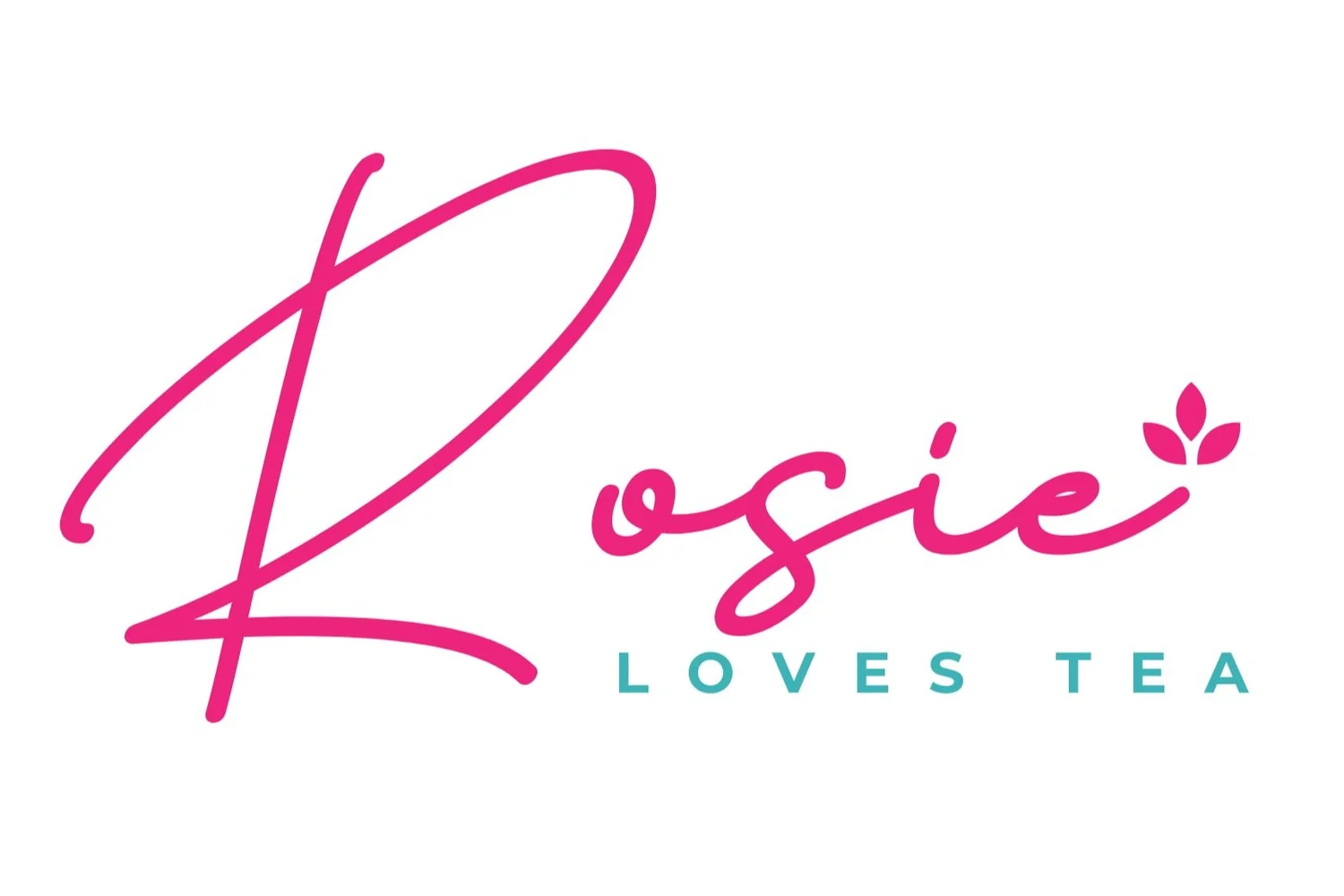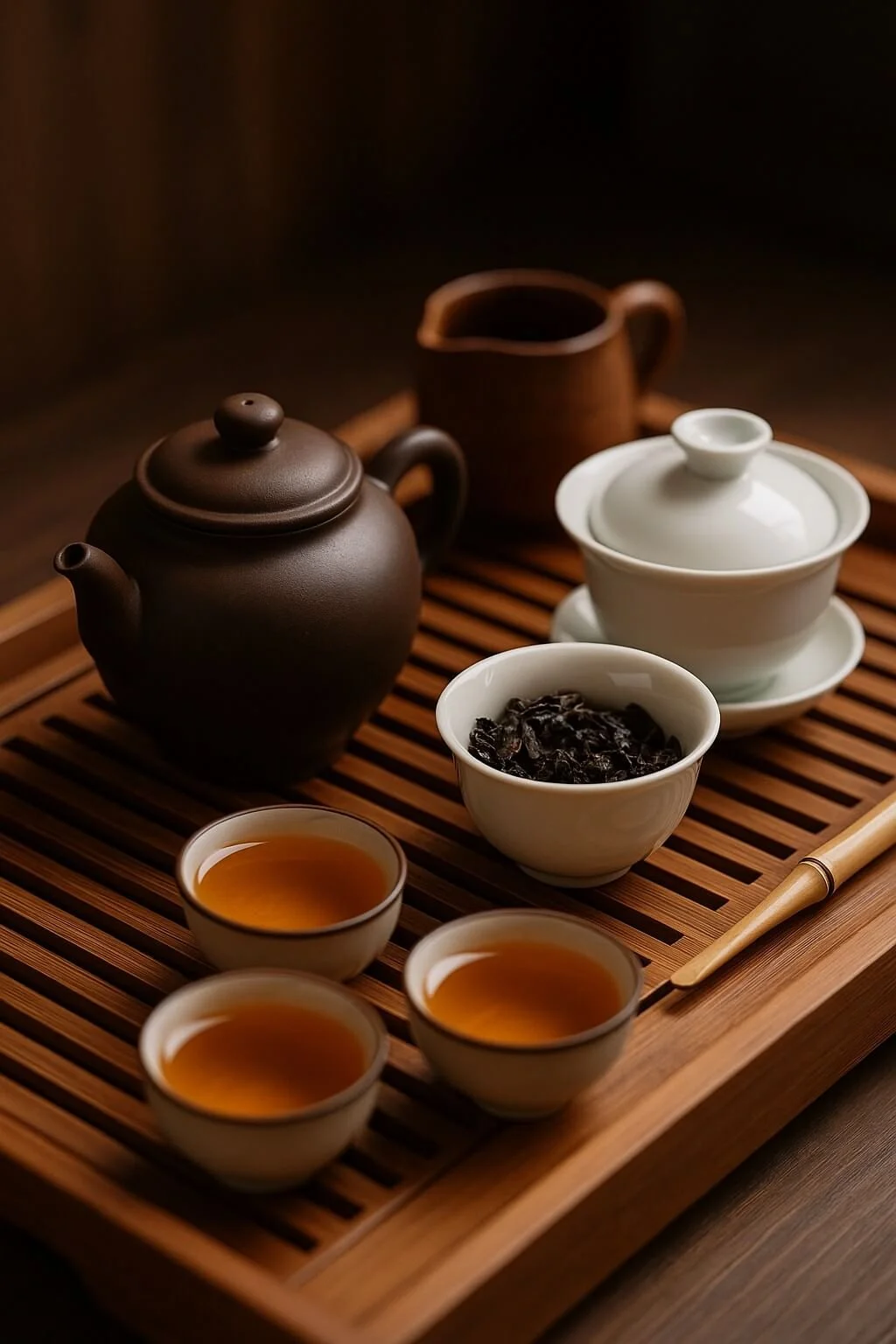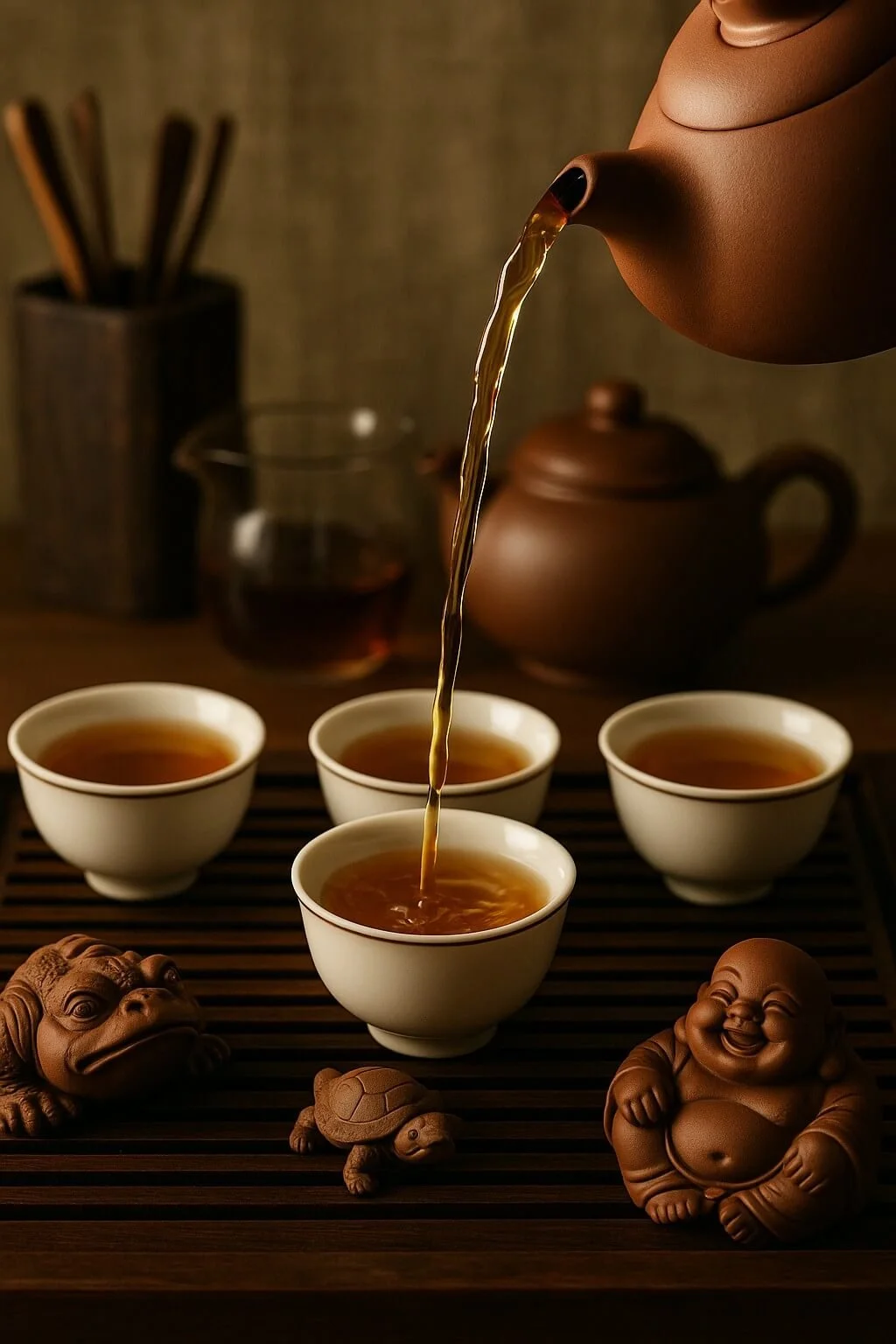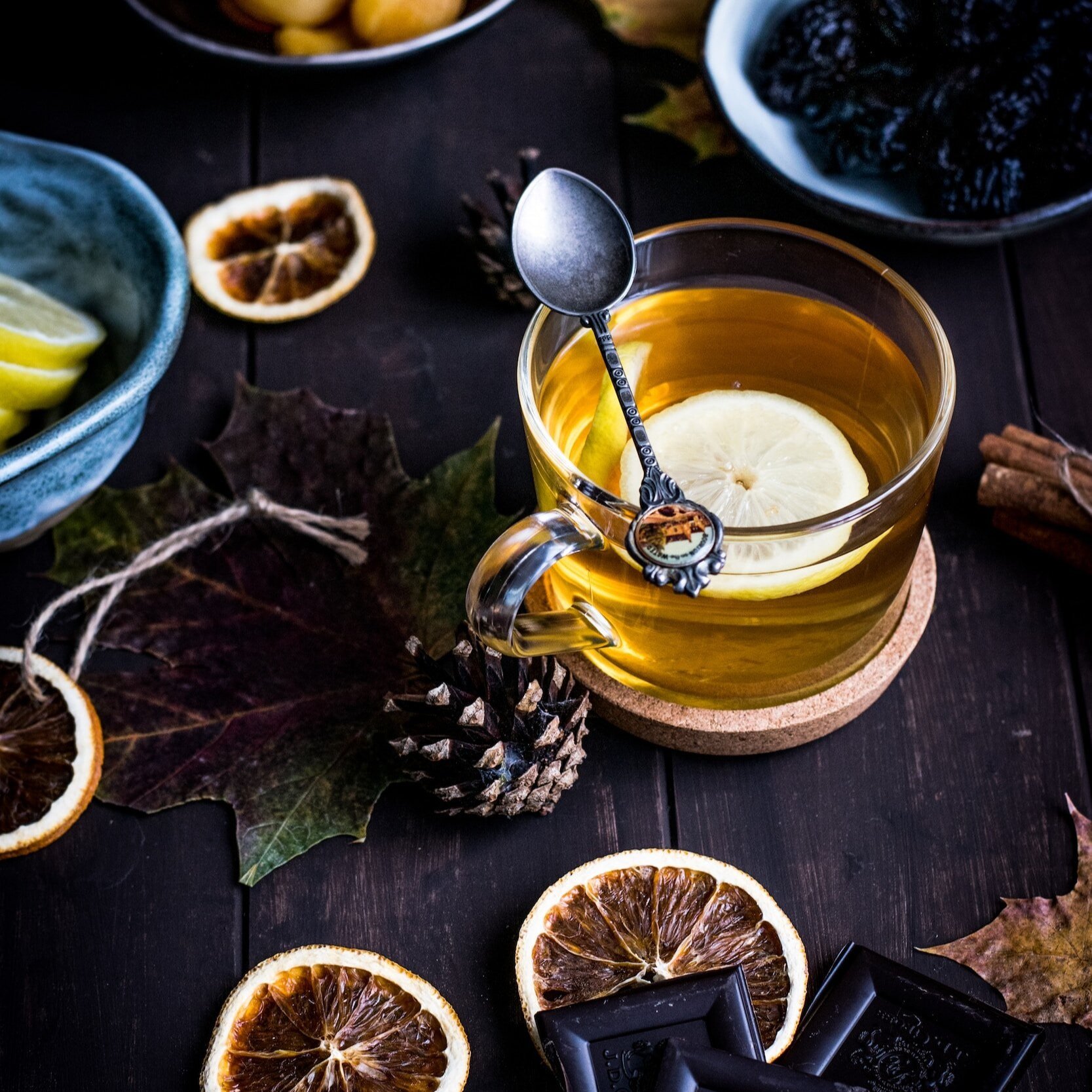Gongfu Cha: Exploring the Chinese Gongfu Tea Ceremony Tradition
Gongfu Cha (工夫茶), often described as the Chinese gongfu tea ceremony, is a beautiful expression of Chinese tea tradition. Rather than brewing a single large pot like in Western tea brewing, this method uses smaller teapots or gaiwans, more tea leaves, and a series of short infusions. The result is a richer, more layered taste that reflects the artistry behind the gongfu tea brewing method.
Rooted in the Fujian and Chaozhou regions, Gongfu Cha is as much about mindfulness and hospitality as it is about flavour. With the right gongfu tea set and tea tray, every step, from pouring to tasting, becomes part of the ritual. In this guide, let’s explore the history of gongfu cha, walk through the ceremony step by step, and I’ll also share tips on choosing the best teas and practicing gongfu cha etiquette so you can enjoy this tradition at home.
If you love exploring different tea traditions and cultures, read this next 👉 tea traditions around the world
What Exactly is Gongfu Cha?
Gongfu Cha, sometimes called Kung Fu Tea or Gong Fu Tea, is more than just a way of making tea, it is a celebrated part of Chinese tea tradition and Chinese tea culture. The phrase translates to “making tea with skill,” reflecting the care and precision behind every step.
Unlike casual brewing, the gongfu tea ceremony is a ritual designed to bring out the fullest flavours and aromas of the tea leaves. It involves:
☕ Special teaware such as Yixing clay teapots, porcelain gaiwans, and tiny tasting cups
☕ Multiple short infusions that highlight different layers of taste
☕ A mindful, almost meditative pace that encourages slowing down and appreciating the moment
At its heart, gongfu cha is both a brewing method and an experience. It allows tea drinkers to connect with centuries of history, enjoy the artistry of the process, and savour tea in its purest form.
Continue reading about the 👉 history of tea in China
The History and Origins of Gongfu Cha
Timeline: The History of Gongfu Cha
- Ming Dynasty (1368–1644): The practice of gongfu cha emerged as scholars and monks refined tea brewing into a precise ritual.
- Qing Dynasty (1644–1911): Gongfu tea culture spread across Fujian and Guangdong. The use of small teapots, cups, and multiple infusions became standard.
- Late Qing Dynasty: Yixing clay teapots from Jiangsu gained prominence, prized for their ability to enhance tea flavour with continued use.
- Cultural Revolution (1966–1976): Traditional practices, including the gongfu tea ceremony, declined as cultural expression was suppressed.
- Modern Era (1980s–Today): Gongfu Cha experienced a revival, celebrated in China and worldwide as a key part of Chinese tea tradition and culture.
Early Beginnings in Ancient China
The roots of Gongfu Cha go back to ancient China, where tea was already a central part of daily life and Chinese tea culture. By the Ming Dynasty (1368–1644), the practice of brewing tea with care and precision had evolved into what became known as the gongfu tea ceremony. Scholars and Buddhist monks often refined the method as a way to enhance meditation, mindfulness, and appreciation of flavour.
Gongfu Cha in the Ming and Qing Dynasties
During the Ming and Qing Dynasties, gongfu tea brewing developed into a highly regarded art form. Small teapots, tiny tasting cups, and carefully measured infusions allowed drinkers to draw out the finest flavours and aromas. The method spread throughout southeastern China, especially in Fujian and Guangdong, where it became a hallmark of hospitality and refinement.
The Role of Yixing Teapots
By the late Qing Dynasty, Yixing clay teapots from Jiangsu province became essential to gongfu cha. Their porous clay absorbed layers of flavour with each use, creating a richer and more complex tea experience over time. These teapots remain highly prized by tea enthusiasts today.
Decline and Revival of Gongfu Cha
The tradition of gongfu cha faced challenges during the Cultural Revolution (1966–1976), when many aspects of traditional culture were suppressed. However, in the late 20th century, the practice was revived as China renewed its connection to its cultural heritage. Today, the gongfu tea ceremony is enjoyed worldwide, valued for its mindfulness, artistry, and deep link to Chinese tea history.
Why is it Called Gongfu Cha and Kung Fu Tea?
The Meaning of “Gong Fu” (功夫)
The term Gong Fu is widely recognised from martial arts, where it translates to “skill,” “effort,” or “achievement through hard work.” In the world of tea, however, gongfu refers to the patience and precision used in the gongfu tea ceremony. Just like martial arts, brewing tea in this way requires dedication, practice, and refined technique.
The Role of “Cha” (茶)
The word Cha simply means “tea” in Chinese. When combined, Gong Fu Cha literally translates to “making tea with skill.” This reflects the heart of the gongfu cha tradition, a brewing method that emphasises mastery, careful timing, and attention to detail to bring out the tea’s finest flavours.
Gongfu Cha vs. Kung Fu Tea
Outside China, “Kung Fu Tea” is often used as an alternate transliteration of Gongfu Cha. Because the phrase “kung fu” is already familiar in English as a reference to martial arts, many tea enthusiasts in the West use it to describe this traditional Chinese tea ceremony. The comparison highlights the artistry and discipline required in both martial practice and gongfu tea brewing.
Tea Pets and Gongfu Cha
In the world of Chinese Gongfu Cha, tea pets, sometimes called tea mascots, are small clay figurines that sit on the tea tray during the gongfu tea ceremony. They are usually crafted from Yixing clay, the same material prized for traditional teapots.
Tea pets are more than decoration. They often symbolise good luck, prosperity, and companionship, adding personality to the tea session. Over time, the porous clay absorbs tea and develops a rich patina, making each tea pet unique to its owner’s brewing journey.
During gongfu cha, tea enthusiasts sometimes pour the first infusion over their tea pet as a gesture of gratitude or blessing. This practice not only honours tradition but also gradually changes the pet’s colour and texture, creating a living record of countless brews.
Continue reading about 👉 the history and meaning of tea pets
Chinese Gongfu Cha vs Japanese Chanoyu
The Japanese Tea Ceremony (Chanoyu)
The Japanese tea ceremony, known as Chanoyu or Sado, has its roots in Zen Buddhism and was shaped by early influences from Chinese tea culture. Emerging in the 13th century, it reflects the principles of harmony, respect, purity, and tranquillity.
At the heart of Chanoyu is matcha green tea, a finely powdered green tea made from shade-grown leaves. The ceremony is often performed in a purpose-built tearoom, designed with simplicity and minimalism in mind. Every gesture is deliberate: the host carefully prepares and whisks the matcha, while guests observe in silence, appreciating the beauty of the tea utensils, the meditative pace, and the tranquil surroundings.
Continue reading about the 👉 history of tea in Japan
The Chinese Gongfu Cha Ceremony
By contrast, Gongfu Cha, the Chinese gongfu tea ceremony, focuses on the skillful brewing of loose-leaf teas, especially oolong and pu-erh. Rather than a single serving of matcha, Gongfu Cha uses multiple short steepings of whole tea leaves in a small Yixing clay teapot or porcelain gaiwan. Each infusion brings out new layers of aroma and flavour.
Unlike the formal setting of Chanoyu, Gongfu Cha is often enjoyed at home or in tea houses, making it more casual yet equally refined. The ceremony celebrates the artistry of brewing, with attention to water temperature, infusion time, and the aesthetics of teaware, from clay teapots to tiny tasting cups. This creates a dynamic tea-drinking experience, where participants savour the unfolding character of the tea across successive infusions.
Two Traditions, One Spirit
While the Japanese tea ceremony emphasises mindfulness, minimalism, and the meditative act of preparing matcha, the Chinese gongfu tea ceremony highlights flavour, aroma, and mastery of brewing technique. Both traditions offer unique ways to experience tea, reflecting the cultural values of their origins, yet they share a common purpose: slowing down, appreciating beauty, and finding connection through tea.
How to Enjoy Gongfu Cha at Home
Experiencing Gongfu Cha, the traditional Chinese gongfu tea ceremony, at home is both relaxing and rewarding. With just a few tools and high-quality tea, you can recreate this mindful ritual in your own space.
🫖 1. Gather Your Gongfu Tea Set:
Prepare the essentials:
A Yixing clay teapot or gaiwan (lidded tea bowl)
Small tasting cups
A tea tray
A fairness pitcher (cha hai)
A tea strainer (optional)
High-quality loose-leaf tea such as oolong or pu-erh
🫖 2. Warm the Teaware: Rinse the teapot and cups with hot water. This warms the vessels and ensures a clean start for your tea.
🫖 3. Measure the Tea Leaves: Use about 1 gram of tea per 15–20 ml of water (typically 6–8 grams for a small teapot). Adjust according to your taste preferences.
🫖 4. Rinse the Leaves: Briefly rinse the tea leaves with hot water to awaken their aroma and remove any dust. Discard the rinse water.
🫖 5. Infuse the Tea: Fill the teapot or gaiwan with hot water at the recommended temperature for your tea type. Steep briefly (10–30 seconds for the first infusion) and increase the time slightly with each brew.
🫖 6. Pour and Share: Pour the tea into the fairness pitcher, then distribute it evenly among the cups. This ensures each guest enjoys the same flavour profile.
🫖 7. Appreciate the Aroma: Before sipping, lift the cup and inhale deeply. The fragrance of gongfu tea is an essential part of the experience.
🫖 8. Savour the Flavour: Take small sips and let the tea roll across your tongue. Notice how the taste evolves with each infusion, revealing new layers of complexity.
🫖 9. Repeat and Reflect: Gongfu cha is about enjoying multiple infusions. Repeat the brewing process several times, extending steeping times as you go. Each round offers a fresh perspective on the same leaves.
🫖 10. Mindful Enjoyment: As you sip, slow down and reflect. The gongfu tea ceremony is more than brewing, it’s a mindful practice that fosters relaxation, appreciation, and connection with Chinese tea culture.
Popular Traditional Chinese Teas to Try with Gongfu Cha
Practicing gongfu cha, the traditional Chinese gongfu tea ceremony, brings out the best in certain teas that reveal their character over multiple infusions. Here are some of the most popular teas to enjoy:
🌿 Tie Guan Yin (Iron Goddess of Mercy) Oolong Tea: From Fujian province, Tie Guan Yin is a floral, aromatic oolong tea with a smooth texture and a lingering sweet aftertaste. Its flavours evolve beautifully across steeps, making it one of the most beloved teas for the gongfu tea brewing method.
🌿 Da Hong Pao (Big Red Robe) Wuyi Rock Tea: One of China’s most famous oolongs, Da Hong Pao comes from the Wuyi Mountains in Fujian. Known for its roasted aroma and mineral-rich, slightly smoky flavour, each infusion reveals new complexity. It is highly prized in Chinese tea culture and perfectly suited for gongfu cha.
🌿 Sheng Pu-erh (Raw Pu-erh) Aged Tea from Yunnan: Sheng Pu-erh, or raw pu-erh, is a fermented tea from Yunnan province. Its natural aging process produces earthy, mellow notes with hints of astringency that soften over time. Brewing Sheng Pu-erh in the gongfu tea ceremony highlights its evolving taste with every steep.
🌿 Longjing (Dragon Well) Iconic Chinese Green Tea: Perhaps China’s most famous green tea, Longjing (Dragon Well) from Zhejiang offers a delicate, chestnut-like flavour with a refreshing, sweet aroma. The gongfu cha method enhances its subtle layers, turning each infusion into a refined sensory experience.
🌿 Huangshan Maofeng, Delicate Green Tea from Anhui: Grown in the Huangshan Mountains, Huangshan Maofeng has small, curly leaves that produce a floral fragrance and mellow flavour. Brewing this green tea with gongfu cha brings out its freshness and gentle sweetness through multiple infusions.
FAQs About Gongfu Cha
1. What is Gongfu Cha?
Gongfu Cha, also known as the Chinese gongfu tea ceremony, is a traditional method of brewing tea with skill and precision. It emphasises multiple short infusions of loose-leaf teas like oolong and pu-erh.
2. Why is it called Gongfu Cha or Kung Fu Tea?
The term “Gong Fu” means skill or effort, while “Cha” means tea. Together, Gongfu Cha translates to “making tea with skill.” “Kung Fu Tea” is a popular alternate transliteration used outside of China.
3. What teas are best for Gongfu Cha?
Oolong teas such as Tie Guan Yin and Da Hong Pao, pu-erh teas, and fine Chinese green teas such as Longjing or Huangshan Maofeng are all excellent choices for Gongfu Cha.
4. What equipment do I need for Gongfu Cha?
A traditional gongfu tea set includes a small Yixing clay teapot or gaiwan, fairness pitcher (cha hai), tea tray, strainer, and small tasting cups.
5. How is Gongfu Cha different from Western tea brewing?
Western brewing typically uses large teapots and long infusions, while Gongfu Cha uses more tea leaves, smaller vessels, and multiple short steepings to reveal layers of flavour and aroma.
6. How many times can I steep tea in Gongfu Cha?
Depending on the tea, you can usually steep oolong or pu-erh leaves 6 or more times. Each infusion reveals different flavour notes and aromas.
7. What is the purpose of tea pets in Gongfu Cha?
Tea pets are small clay figurines placed on the tea tray. They are often made of Yixing clay and symbolise luck or companionship. Many tea drinkers pour the first infusion over the tea pet as an offering.
8. Do I need to use Yixing teapots for Gongfu Cha?
Yixing clay teapots are traditional and enhance flavour over time, but a gaiwan (porcelain lidded bowl) works just as well, especially for beginners.
9. Can beginners practice Gongfu Cha at home?
Yes! With a simple gaiwan or teapot, some loose-leaf tea, and patience, anyone can enjoy Gongfu Cha at home. The key is focusing on mindful brewing and appreciating each infusion.
10. Is Gongfu Cha a religious or spiritual practice?
While not religious, Gongfu Cha has spiritual and meditative aspects. Rooted in Chinese tea culture, it encourages mindfulness, patience, and connection with the moment.
Read these tea articles next:






